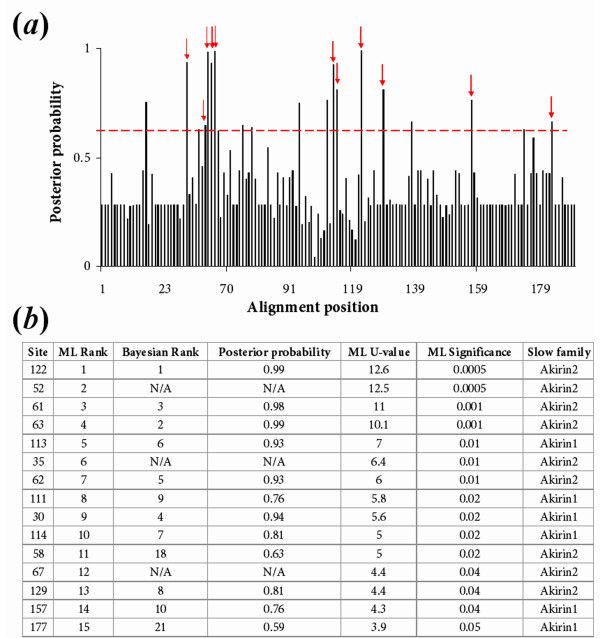Figure 8.
(a). Site-specific profile predicting residues underlying type-I functional divergence between Akirin1 and Akirin2 paralogues measured by a Bayesian posterior probability method [28] in DIVERGE [33]. After a cut-off value of 0.6 (dotted red line) was employed, ~20 sites were considered the most likely candidates for type-I divergence. Red arrows show sites that were also shown to be have evolved at a significantly faster/slower rate in one Akirin paralogue, using a ML LRT [29] (see part b of this figure). (b). Table summarising the 15 highest-ranking positions with significant rates shifts between Akirin1 and Akirin2 using the ML LRT [29]. Also shown are the ranking of these same sites, established using the posterior probability approach. N/A in the Bayesian rank column indicates that the test could not be performed at this position, since this method cannot accommodate alignment gaps. The two methods produced similar results and the top 10 Bayesian candidate sites for functional divergence were among the top 15 ranking sites by the ML approach.

